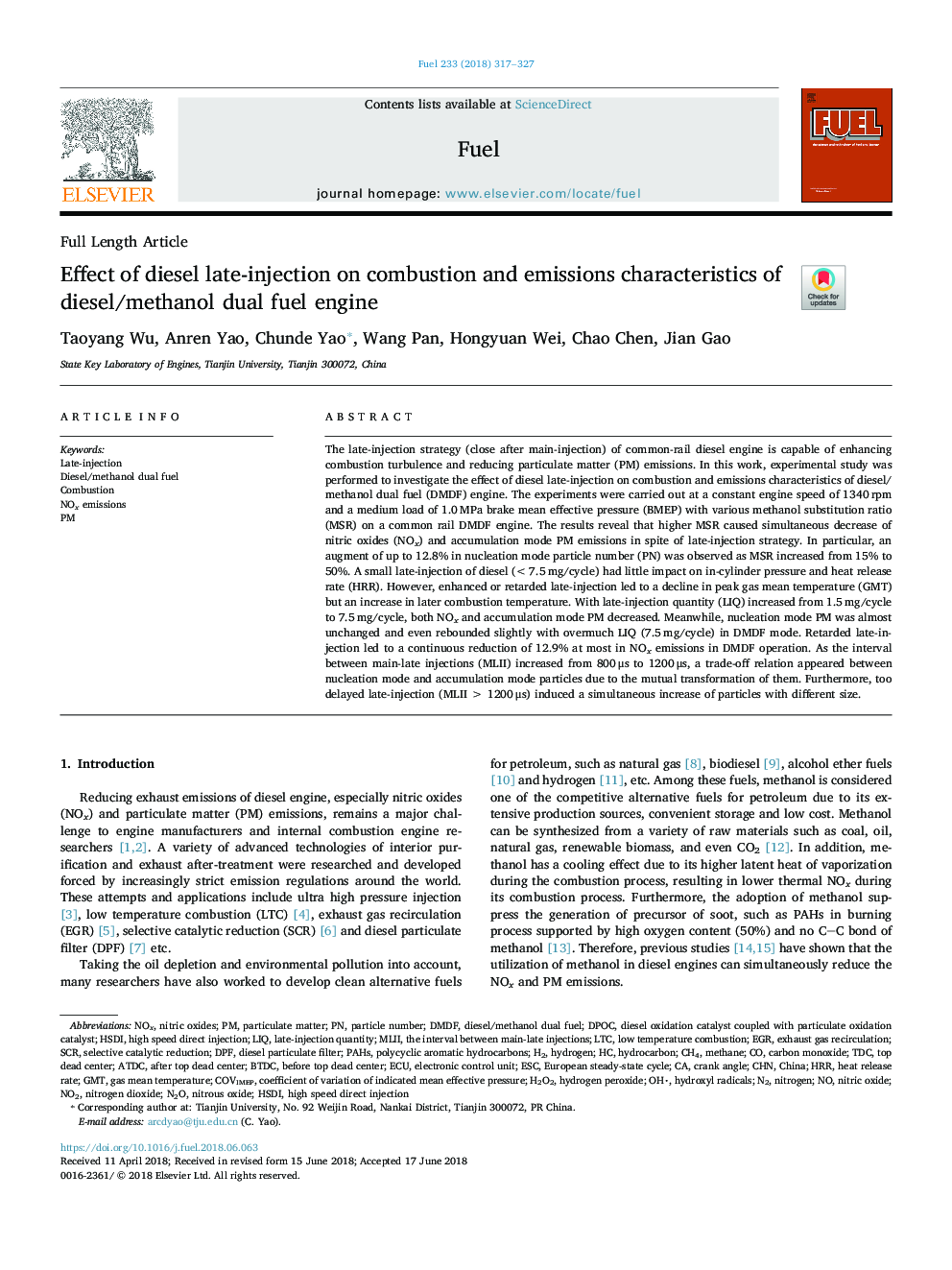| Article ID | Journal | Published Year | Pages | File Type |
|---|---|---|---|---|
| 6630220 | Fuel | 2018 | 11 Pages |
Abstract
The late-injection strategy (close after main-injection) of common-rail diesel engine is capable of enhancing combustion turbulence and reducing particulate matter (PM) emissions. In this work, experimental study was performed to investigate the effect of diesel late-injection on combustion and emissions characteristics of diesel/methanol dual fuel (DMDF) engine. The experiments were carried out at a constant engine speed of 1340â¯rpm and a medium load of 1.0â¯MPa brake mean effective pressure (BMEP) with various methanol substitution ratio (MSR) on a common rail DMDF engine. The results reveal that higher MSR caused simultaneous decrease of nitric oxides (NOx) and accumulation mode PM emissions in spite of late-injection strategy. In particular, an augment of up to 12.8% in nucleation mode particle number (PN) was observed as MSR increased from 15% to 50%. A small late-injection of diesel (<7.5â¯mg/cycle) had little impact on in-cylinder pressure and heat release rate (HRR). However, enhanced or retarded late-injection led to a decline in peak gas mean temperature (GMT) but an increase in later combustion temperature. With late-injection quantity (LIQ) increased from 1.5â¯mg/cycle to 7.5â¯mg/cycle, both NOx and accumulation mode PM decreased. Meanwhile, nucleation mode PM was almost unchanged and even rebounded slightly with overmuch LIQ (7.5â¯mg/cycle) in DMDF mode. Retarded late-injection led to a continuous reduction of 12.9% at most in NOx emissions in DMDF operation. As the interval between main-late injections (MLII) increased from 800â¯Î¼s to 1200â¯Î¼s, a trade-off relation appeared between nucleation mode and accumulation mode particles due to the mutual transformation of them. Furthermore, too delayed late-injection (MLIIâ¯>â¯1200â¯Î¼s) induced a simultaneous increase of particles with different size.
Keywords
DMDFCOVimepHSDIDPOCCHNGMTDPFHRRECULTCN2OTDCCH4aTDCEGRbTDCNOxHydrogen peroxideCombustionLow temperature combustionNOx emissionsNitrous oxideNitric oxidesafter top dead centerparticle numberESCparticulate matterHydroxyl radicalsCrank Anglediesel/methanol dual fuelDiesel particulate filterbefore top dead centerLiqMethanetop dead centercarbon monoxideHeat release rateNitrogenNitrogen dioxideNO2Nitric oxideHydrogenH2O2hydrocarbonPolycyclic aromatic hydrocarbonsPAHselectronic control unitSelective catalytic reductionChinaexhaust gas recirculationSCR
Related Topics
Physical Sciences and Engineering
Chemical Engineering
Chemical Engineering (General)
Authors
Taoyang Wu, Anren Yao, Chunde Yao, Wang Pan, Hongyuan Wei, Chao Chen, Jian Gao,
